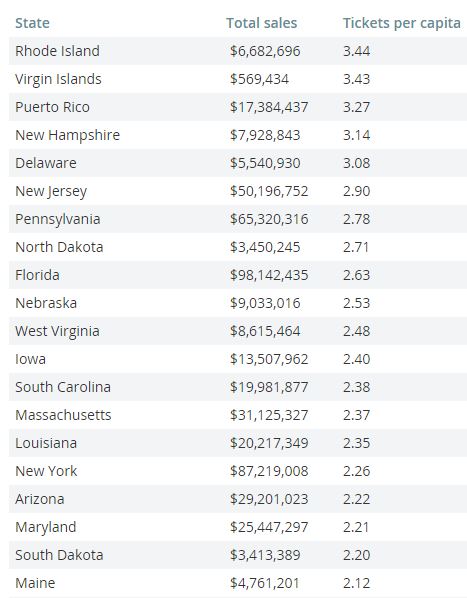With the current Powerball Jackpot estimated at $1.4 billion, the highest amount ever, people everywhere are lined up to buy tickets—and making plans for their winnings. The odds of winning Powerball, however, are one in 292,201,338. Meanwhile the odds of being struck by lightning in any given year are one in 700,000.
To maximize their odds of winning, many form pools to purchase more tickets. Often this takes place at work, but if a company is located in a state where the lottery or gambling is illegal, an office pool may not be a good idea.
Powerball tickets are sold in 44 states, as well as Washington, D.C., the U.S. Virgin Islands and Puerto Rico. They are not allowed to be sold in Alabama, Alaska, Hawaii, Mississippi, Nevada and Utah.
“Even if you pool your money and then buy a ticket from another jurisdiction, the criminal statute may still apply. You were arguably participating in and promoting a lottery within the state,” Stephanie Rabiner wrote.
Employees of the U.S. government should also be aware that they are prohibited from taking part in any gambling activity on government-owned or government-leased property, or when they are on duty for the government.
But with so much money at stake, what could go wrong? Plenty, and with the jackpot so high, the likelihood for complications is also increased.
Midge Seltzer, president of Engage PEO, lists a few of the potential problems and steps that can be taken to circumvent them.
Potential issues:
- Employee claims he or she bought the winning ticket and was not part of the pool.
- Employee only verbally said, “I’m in,” or “Yes, and I’ll give you the money tomorrow.
buy cymbalta online www.artforhealingfoundation.org/wp-content/uploads/2023/10/jpg/cymbalta.html no prescription pharmacy
“
- Participants aren’t actually known, because the pool is so loosely handled.
- An employee had participated previously, but was absent to contribute to this pool.
Guidance:
- Ensure that all participants pay prior to purchase of lottery tickets.
- Choose a leader—the employee who will be responsible to purchase the tickets and put them in a safe place.
- Make copies of the tickets.
- Have all participants write and sign their names and have the lead confirm that he/she paid for the tickets.
buy zantac online rxbio.com/images/milestones/jpg/zantac.html no prescription pharmacy
- Agree beforehand how employees will choose the numbers (at random or set numbers).
- Agree beforehand whether employees will take a lump sum or payout.
What are the most popular states for Powerball?
Residents of Rhode Island have bought the most Powerball tickets, with an average of 3.44 tickets per person since the last jackpot was won on Nov. 4, according to consumer finance website ValuePenguin.
The top 20 states for per-capita participation in Powerball:






